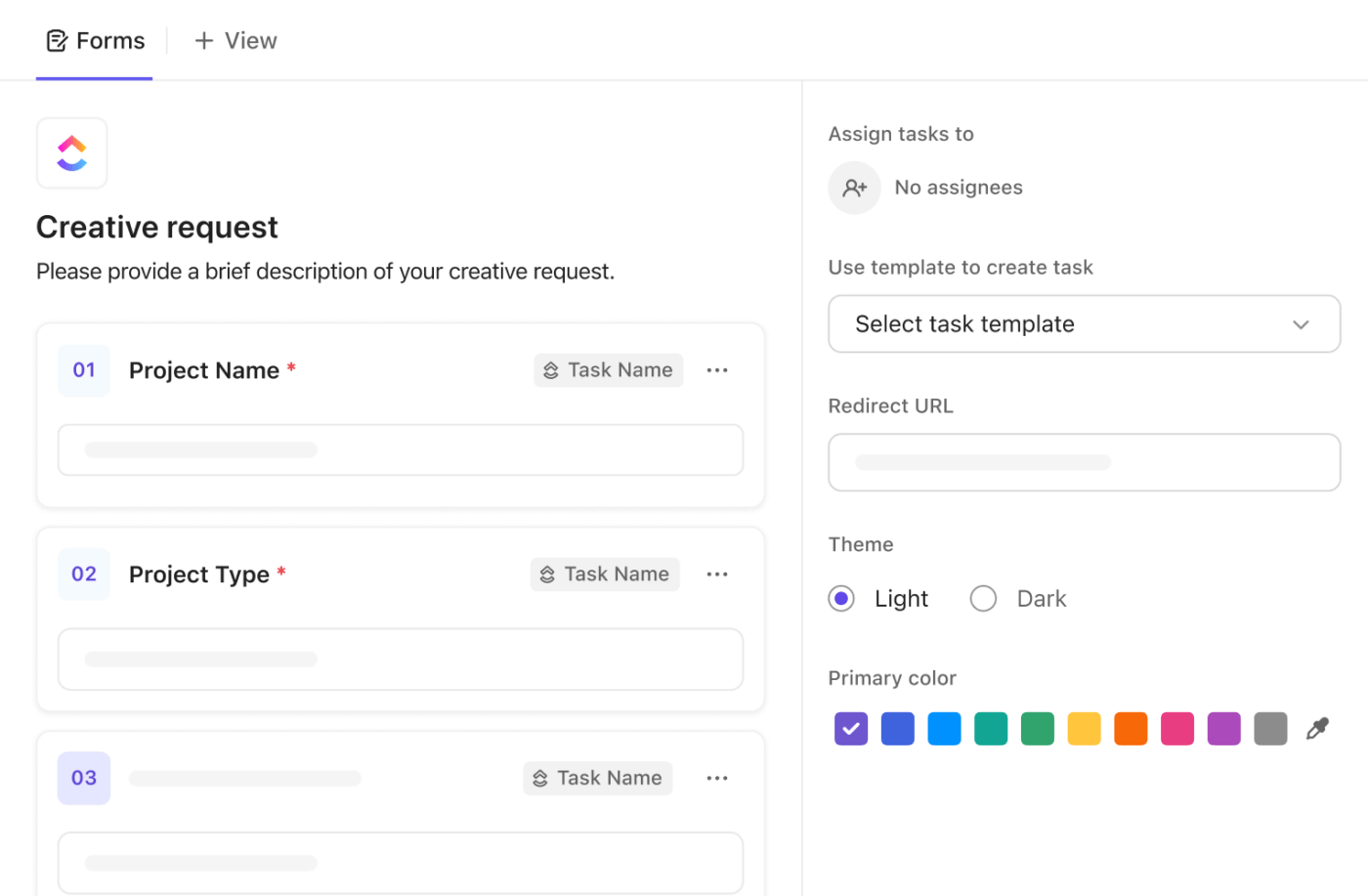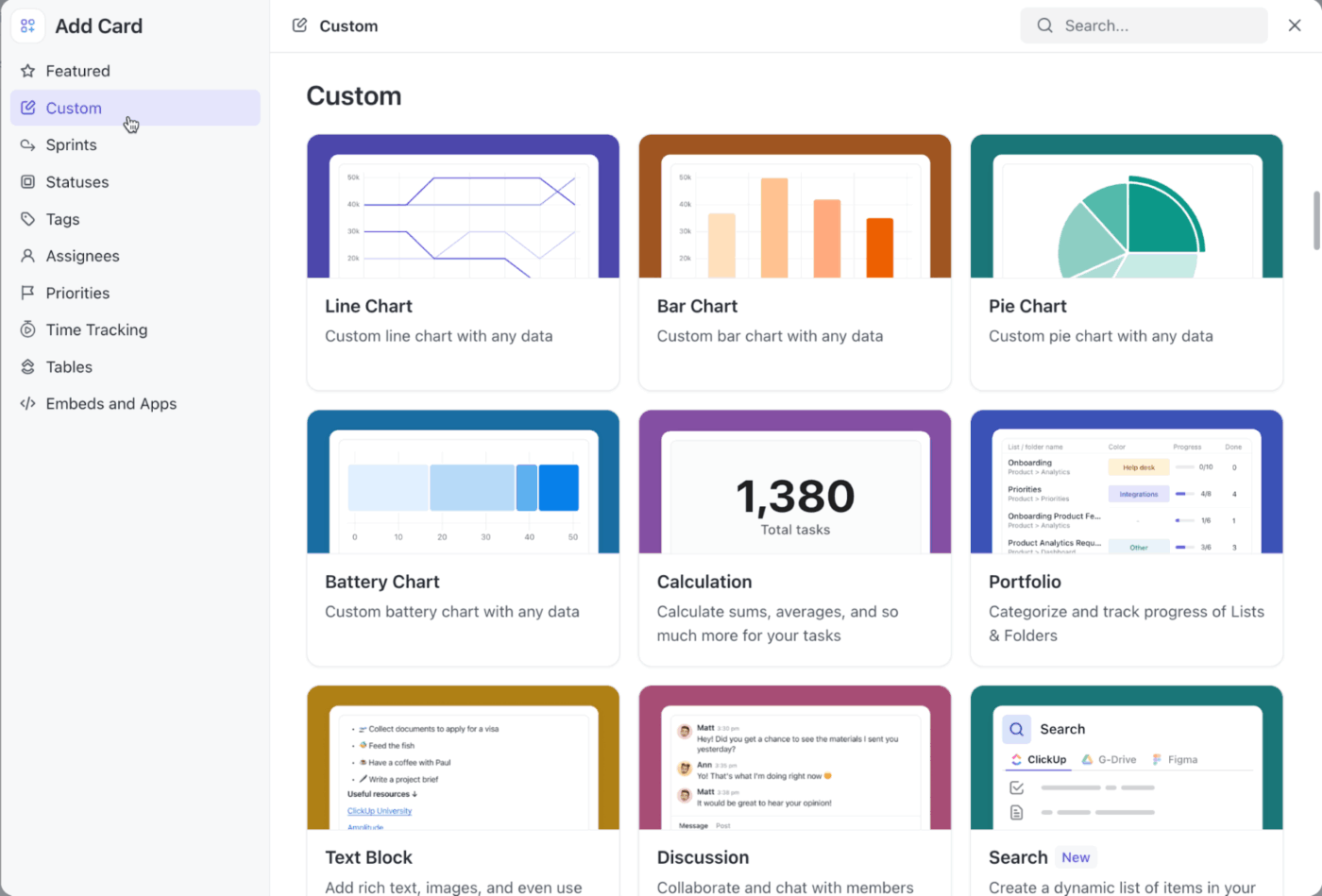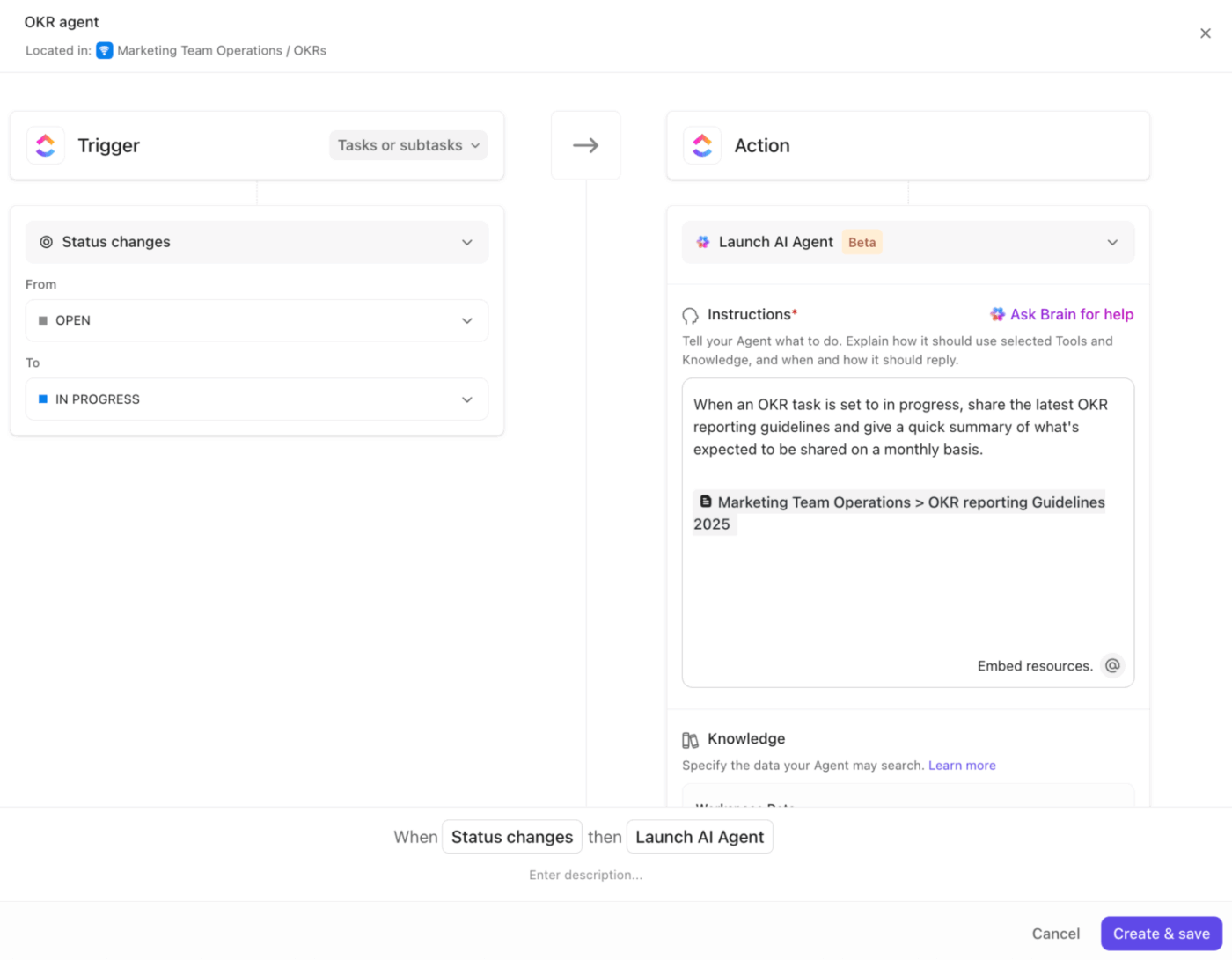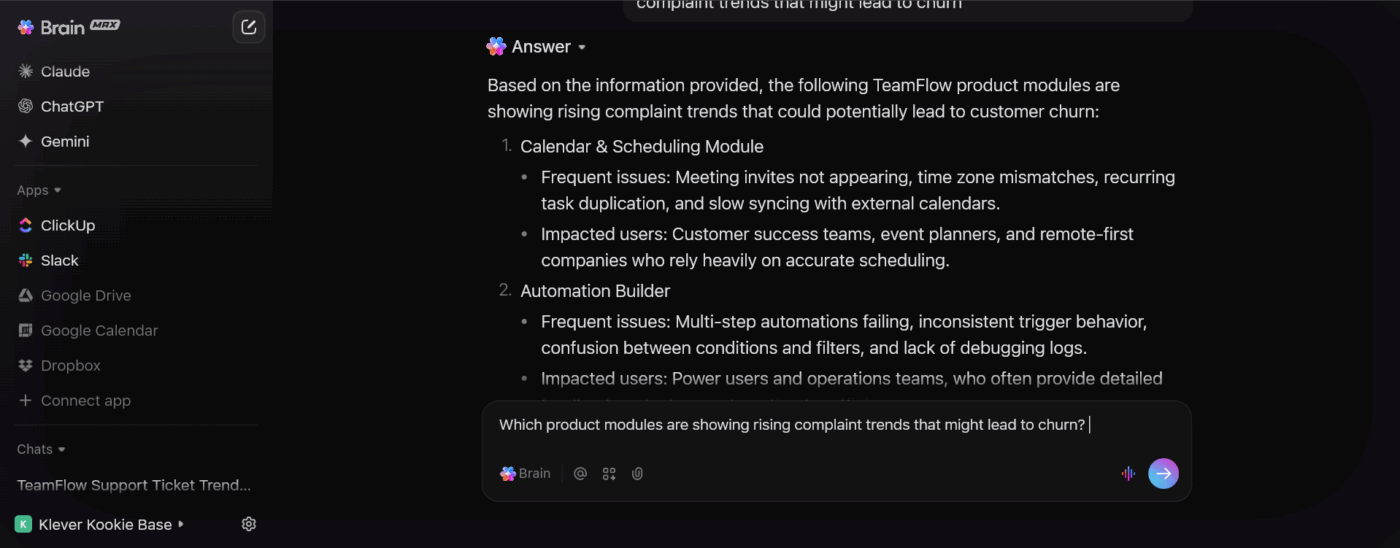How to Use Feedback Loops (Types, Examples, Templates)

Sorry, there were no results found for “”
Sorry, there were no results found for “”
Sorry, there were no results found for “”

Strategy doesn’t fail from lack of vision—it fails from lack of feedback.
You can’t course-correct if you don’t know where you stand. And without fast, clear feedback loops, even the boldest initiatives drift off track.
Most organizations still rely on sluggish reporting cycles, stitched together from spreadsheets, slide decks, and status pings. By the time insights reach decision-makers, they’re already outdated.
This is where transformation quietly breaks down—not in planning, but in the pause between action and adjustment.
That’s why modern reporting isn’t just about tracking results—it’s about accelerating the loop between execution and learning. AI is making those loops faster, sharper, and more connected. Live dashboards, automated updates, and real-time insights are turning reporting into the heartbeat of strategic progress.
If strategy is your map, feedback loops are your GPS. And without them, even the best plans get lost.
The ClickUp Feedback Form Template gives you a simple, structured way to collect clear input from teammates, clients, or stakeholders.
You can capture what worked, what didn’t, and what needs attention using ClickUp Custom Fields that keep responses organized and easy to act on. Each submission turns into a trackable ClickUp Task, so follow-ups never get lost. You can assign owners, add priorities, and move it through ClickUp Custom Statuses, such as Received, In Review, and Completed.
Feedback loops are processes where the results of an action circle back and influence that same action again, creating an ongoing cycle.
In simple terms, what happens feeds back into what caused it to happen in the first place. We encounter these all the time: the thermostat adjusting room temperature, a microphone creating that screeching sound when it picks up its own output, or even how success breeds more success.
In business, a feedback loop is the continuous cycle of collecting input, acting on it, measuring results, and refining the process.
🧠 Fun Fact: Cornelis Drebbel designed what’s considered the first thermostats in the 1600s. It automatically regulated the temperature in a chicken incubator using a closed-loop feedback mechanism.
Here’s how it looked:
Positive and negative feedback loops shape how teams respond to change. One reinforces a pattern, the other corrects it.
Here’s a brief comparison. 👇
| Aspect | Positive feedback loop | Negative feedback loop |
| Core idea | Reinforces productive actions or outcomes | Corrects behaviors or processes that need adjustment |
| Effect on team dynamics | Builds momentum and boosts engagement and employee satisfaction | Brings the team back on track and maintains stability |
| When teams use it | Celebrating wins, doubling down on effective practices | Addressing blockers, fixing workflow issues, and improving accuracy |
| Benefit | Encourages continuous improvement and motivation | Helps maintain quality, consistency, and alignment |
| Risk | Can create overconfidence or tunnel vision | Can feel restrictive if overused |
| Example | Boosted customer satisfaction leads the team to optimize similar feedback loops | Regular retros help teams identify issues and refine workflows |
Here’s why loops are essential for feedback management:
🧠 Fun Fact: The earliest feedback loops appeared in ancient Greek water clocks built by Ktesibios in the 3rd century BCE. They used mechanical controls to regulate water flow. It was an early form of automated self-correction.
Feedback loops follow a simple pattern that repeats continuously. This is how they usually work:
Start gathering signals from the real world.
Your support team logs recurring customer complaints. Product analytics show where users get stuck. Sales calls reveal the same objections repeatedly. Students struggle with identical quiz questions.
Set up infrastructure to capture what matters: sentiment scores, feature usage data, drop-off points, and time-to-completion metrics. Collect systematically, not randomly.
💡 Pro Tip: When you need to deliver constructive criticism gently, especially to new team members or sensitive collaborators, use the feedback sandwich. Start with genuine praise, share the specific area for improvement, and close with encouragement or recognition.
Spot the patterns hiding in the noise by analyzing customer feedback. If 40% of trial users never activate a core feature, dig into why.
When three different teams escalate the same process bottleneck, pay attention. Campaign CTR tanks on mobile but crushes on desktop? You’ve learned something specific. This step separates the signal from the static.
🔍 Did You Know? The Kaizen principle of continuous improvement took shape in post-WWII Japan, becoming one of the most influential organizational feedback philosophies in history.
Pick your move based on the clearest signal. This might involve:
Ensure you’re addressing real problems, not hypothetical ones.
Once you’ve understood what to change, execute fast. Deploy the code, launch the campaign, update the curriculum, roll out the new workflow. Speed determines how quickly you learn if your hypothesis was right.
📮 ClickUp Insight: While 78% of our survey respondents are big on setting goals, only 34% take time to reflect when those goals don’t pan out. 🤔
That’s where growth often gets lost.
With ClickUp Docs and ClickUp Brain, a built-in AI assistant, reflection becomes part of the process, not an afterthought. Automatically generate weekly reviews, track wins and lessons, and make smarter, faster decisions moving forward.
💫 Real Results: ClickUp users report a 2x increase in productivity because building a feedback loop is easy when you have an AI assistant to brainstorm with.
Track what changed after your intervention and compare before vs. after states rigorously.
If completion rates improved but time-to-value got worse, you’ve traded one problem for another. When nothing moves at all, your change has missed the mark.
📌 Example: A product manager notices 60% of new users never complete profile setup. Session recordings reveal users abandon the flow when asked for their company size, a required field that feels invasive this early. The team makes it optional and moves it to account settings, and profile completion jumps to 85%.
But the loop continues. That success becomes the new baseline. Further analysis shows users who skip company size get less relevant recommendations. That’s the next problem to solve. The cycle repeats.
This is how products improve; each iteration builds on the last. You solve one constraint, measure the results, and those measurements reveal the next opportunity, so the loop never closes because there’s always something to optimize.
As you measure impact and start iterating, the loop naturally generates more feedback. That’s where many teams stumble—not because they don’t collect feedback, but because they don’t consistently follow through. Updates get lost, owners aren’t clear, and no one closes the loop with the people who spoke up.
This is where a simple structure makes all the difference. And that’s exactly what this next template delivers.
⭐ Close the Loop Template
Turn feedback into follow-through with the ClickUp Close the Loop Template. Capture input, assign an owner, track progress, and record the final outcome—all in one simple, trackable workflow.
Feedback loops help teams refine decisions, reduce inefficiencies, and improve outcomes with each cycle.
These examples show how different functions use structured loops in their daily work. 🧑💻
When a product team rolls out a revised onboarding flow, they monitor the exact points where users slow down or exit. If a large portion of users leave on the permissions screen, the team revisits the copy, adjusts placement, or restructures the sequence to reduce friction.
Once the update is live, the next set of user interactions reveals whether the adjustment improved completion rates or introduced new hesitation. That fresh data becomes the foundation for the next iteration.
⚡️ Template Archive: Gather targeted input from users with structured questions in the ClickUp Product Feedback Survey Template. It includes Custom Fields like overall rating, suggestions for improvement, customer tier, and date of purchase, enabling you to segment responses by user type and timeline.
Ops teams often center their loops around scheduled audits. During a weekly procurement review, the team may find that vendor approvals repeatedly stall at a particular step.
Instead of assuming the cause, they examine handoff times, reviewer load, and routing logic before making a targeted update. When the workflow runs again, the results indicate whether the change resolved the slowdown or if the issue sits deeper in the process.
🔍 Did You Know? In cognitive psychology, immediate feedback strengthens memory pathways far more effectively than delayed feedback. This is why agile teams rely on rapid iteration.
A launch page draft moves through product, sales, CX, and design. Every round of review uncovers a different level of detail: feature positioning, objection coverage, accessibility issues, or visual clarity. As the revised draft returns to the group, the conversation shifts from foundational corrections to smaller, more specific adjustments.
The loop eventually settles when the page stops surfacing new gaps and all teams sign off with confidence.
⚡️ Template Archive: Move from collection to review to action without losing momentum with the ClickUp Feedback Form Template. This feedback form template comes with six distinct views, including Feedback Table View, Provider Rating Table View, and Overall Recommendation Board View, for greater visibility.
A customer feedback loop happens when support teams see a cluster of tickets linked to the same task, like when customers struggle with invoice downloads.
CX documents the confusion and shares it with the product team, which updates the button placement, clarifies microcopy, and improves the help-center steps. As the updated flow rolls out, the next wave of tickets shows whether the issue has improved the end-to-end customer experience or morphed into a different pain point.
🔍 Did You Know? People tend to overestimate how well they understand a system due to the ‘Illusion of Explanatory Depth.’ Feedback loops help expose these hidden gaps.
Teachers run quick comprehension checks at the end of a lesson to see how well students absorbed a concept. If responses show partial understanding, the next class incorporates clearer explanations or more guided practice. Afterward, a short follow-up check confirms whether the adjustment actually improved comprehension.
🧠 Fun Fact: The military term ‘After-Action Review’ (AAR), created by the U.S. Army in the 1970s, is one of the earliest formalized team feedback loops.
Here’s how to set up feedback loops in a way that works for your team. 💁
Most organizations collect feedback without knowing why. Before you launch another product feedback survey or set up a form, pause and ask: what decision are we trying to make? What will change if we have this information?
Your purpose should answer three things:
Once you have clarity, pick 2-3 KPIs that connect feedback to business outcomes. NPS trends reveal satisfaction shifts. While feature adoption rates show which capabilities resonate. Time-to-resolution for support tickets identifies systemic pain. Without this anchor, your team will collect opinions instead of intelligence.
💡 Pro Tip: The Net Promoter Score (NPS), launched in 2003, is one of the simplest yet most influential feedback mechanisms for predicting customer loyalty. Here’s a breakdown:
Calculate it by subtracting the percentage of Detractors from the percentage of Promoters. The resulting score is an integer ranging from -100 to +100.
Each feedback channel sees a different corner of the truth. But the mistake most teams make is choosing one.
Instead, layer them strategically:
Your analytics layer is the truth detector that catches when what customers say doesn’t match what they do.
🚀 ClickUp Advantage: Collect targeted, high-quality feedback that moves work forward using ClickUp Forms.

Ask for feedback across these scenarios:
Every form submission becomes a ClickUp Task with the respondent’s details, the issue, the impact, and any attachments already filled in. This makes it easy to assign, prioritize, and track actionable steps within the customer feedback tool.
When feedback comes in different formats, with different labels and different contexts, you spend half your time interpreting. Standardization helps you spot patterns here.
Create templates for each channel:
Document the thinking behind each field: why you ask it, what you’ll do with the answer. This helps new team members understand intent.
💡 Pro Tip: Review and update your questionnaire templates quarterly. What worked in January might be outdated by May as your product and customers evolve.
Feedback sitting in an inbox is just noise. It needs a journey, from collection to categorization to the person who can actually act on it.
Build a simple intake system:
The mechanism matters less than the outcome: a product manager’s goal is to avoid digging through 200 comments to find insights about their features. The feedback should find them.
💡 Pro Tip: Drive your feedback flow with ClickUp Automations. They work by combining triggers, conditions, and actions (with simple ‘if this, then do that’ commands), so your Tasks update themselves.

Some automation examples you can try:
Learn more about workflow automation here:
Here’s where feedback stops being data and starts being change: you tell people what happened with their input.
When customers see their suggestion ship, they become advocates, and when support teams see their reported issues fixed, they’re motivated to collect smarter feedback.
A closed loop within your product feedback software should look like this:
Communication transforms feedback from a one-way complaint channel into a dialogue, showing that feedback has weight in your organization. Over time, this shifts the culture because teams start thinking systematically about problems instead of reacting emotionally.
🚀 ClickUp Advantage: Closing the loop depends on how well you communicate the outcomes, and ClickUp Brain helps you write those updates without starting from scratch.
Its Contextual AI has relevant information from your workspace, so you can ask it to turn all that (rough notes, scattered comments, or a list of resolved items) into a polished message for customers, internal teams, or stakeholders.

ClickUp Brain can summarize themes from your feedback Tasks, organize what was addressed, highlight what’s still in progress, and shape it into a monthly or quarterly update that’s easy to share.
Even when the answer is ‘no,’ ClickUp Brain helps you frame the reasoning clearly and respectfully, so people understand the decision rather than feeling ignored. It makes the communication part of the loop faster, more consistent, and more deliberate.
📌 Try this prompt: Summarize the key themes from all comments and subtasks in this feedback task. Turn that summary into a clear stakeholder update.
For this step, while spreadsheets are fine to start, they don’t survive beyond a few thousand customer data points. Here’s how you can scale:
🚀 ClickUp Advantage: As feedback volume grows, you need a way to see signals without digging. ClickUp Dashboards give you a live view of trends across all the feedback coming in: what’s increasing, what’s repeating, and what’s starting to break.

You can pull in custom Cards to track the number of new submissions by type, the volume of bugs vs. feature ideas, customer retention rates, average response times, and themes emerging across departments.
Example cards to gather feedback and ensure accurate product knowledge:
With AI and automation, you get quick signals, fewer manual check-ins, and a clearer picture of what needs attention without extra effort.
Learn more here. 🦾
Feedback arrives in fragments: long interview transcripts, support tickets, and open-ended survey responses. Reading hundreds of pages takes time, yet it often fails to yield clear insight.
AI summarization with ClickUp Brain compresses this noise into coherent themes.
Modern large language models (LLMs) like ChatGPT, Claude, Gemini, and DeepSeek within the ClickUp Brain interface can:
ClickUp Brain transforms raw feedback into decision-ready intelligence.

You can also @mention ClickUp Brain and ask it questions like: What’s driving onboarding friction? It will pull patterns from every relevant source to answer you.
🔍 Did You Know? James Watt’s steam engine governor (1788) is considered one of the most prominent industrial feedback control devices. It prevented engines from running too fast, laying the foundation for modern automation.
Manual categorization doesn’t scale. Someone has to read each piece of feedback and decide: is this a bug? A feature request? A workflow problem? Meanwhile, sentiment shifts go undetected, like a support ticket’s frustrated tone might signal deeper dissatisfaction.
AI handles this consistently:

ClickUp AI Agents automate many of these tasks. They adapt to your workspace and act autonomously based on the specified instructions.
For example, you can set up a Custom Agent to watch every new item added to your Product Feedback list. When a ticket comes in saying, ‘The dashboard takes forever to load,’ the Agent uses your triggers, conditions, and workspace knowledge to decide what to do.
It also identifies that ‘slow’ refers to performance, not onboarding, tags the item as a performance bug, assigns it to the right engineering owner, and posts a short update in the team’s ClickUp Chat channel.
Once feedback is categorized and routed, automation can trigger structured responses. This moves routine work aside so humans can focus on what matters.
Workflow automation examples include:
Watch this video to learn how to automate tasks with AI:
Historical feedback is useful, and predictive feedback is strategic. AI tools like ClickUp Brain MAX can forecast what’s coming before it becomes widespread.
Consider:
These insights shift you from reactive (responding to feedback) to proactive (anticipating it). You surface problems in weeks instead of quarters.

For example, you can ask: ‘Based on past support tickets over the last 12 months, which product modules are showing rising complaint trends that might lead to churn?’ Brain MAX references historical data and comparable patterns to answer.
Martha Kumi, Technical Writer at Akkadian Labs, shares:
Information sharing and collaboration have been a breeze now that all teams work remotely. It is easy to share project updates and give feedback to team members. We are able to track tasks and projects across teams and give updates in real-time.
Rather than static rules, intelligent AI agents learn routing patterns and adapt. Context shapes every decision: a technical support issue routes through one path while a billing concern follows another, even if both arrive as customer messages.
ClickUp AI Agents can:
The outcome: feedback reaches the right expert faster. Resolution time drops. Customer friction transforms into friction data that shapes product strategy.
Watch this video to build your own AI agent:
Feedback loops help teams see what’s working, what’s slipping, and what needs a rethink. Once they run loops consistently, decisions feel cleaner and every improvement stacks on top of the last one.
ClickUp keeps these internal processes alive without extra effort.
Forms collect input without noise, Automations remove repetitive work, Dashboards show you patterns as they form, and ClickUp Brain turns scattered notes into updates people want to read. ClickUp AI Agents handle the tagging, routing, and following up, so your team focuses on optimizing business success.
Sign up to ClickUp for free today! ✅
A process is a structured sequence of steps to complete work. On the other hand, a feedback loop is a cycle where information from outcomes flows back into the system to guide improvements. Simply put: a process moves work forward and a feedback loop keeps refining how the work happens.
You measure your feedback loop’s effectiveness by tracking response time, action rate, quality of insights, and visible improvements to workflows or product decisions. Strong loops show faster iteration, fewer recurring issues, and clearer alignment between input and action.
Feedback loops improve product quality by capturing real user insights, identifying gaps early, and guiding targeted enhancements. The continuous flow of input helps teams refine features, remove friction, and build solutions that match user expectations.
Teams commonly use tools like ClickUp and Hotjar to gather, organize, and act on feedback through clear tracking, prioritization, and collaboration.
No. Continuous improvement is a broader philosophy focused on ongoing refinement. Feedback loops support that philosophy by providing the structured input-action cycle that fuels those improvements.
© 2026 ClickUp